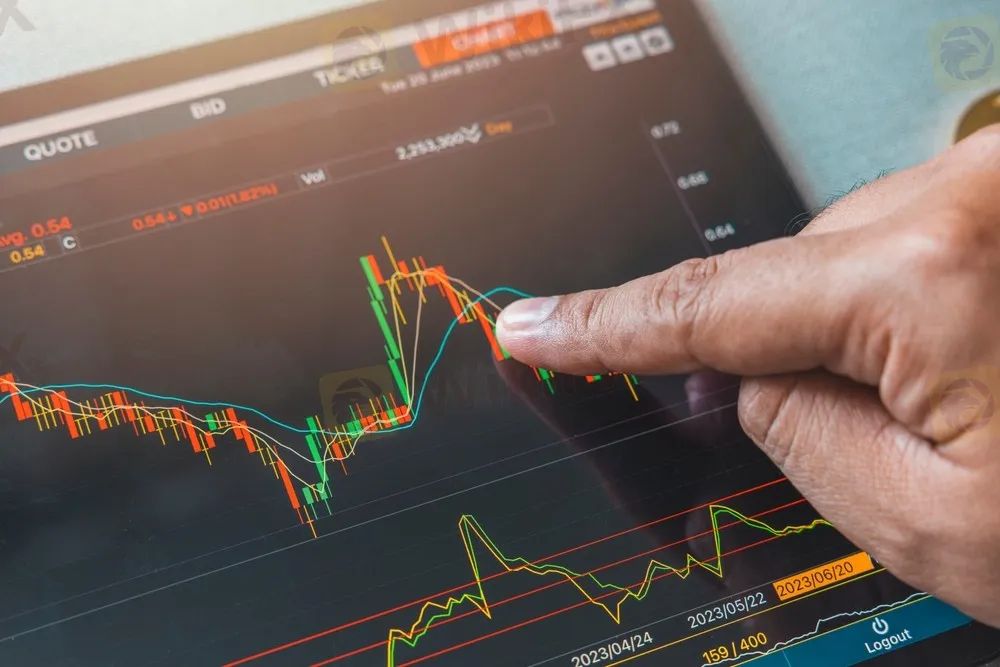How Metal Trading Can Boost Your Portfolio
Zusammenfassung:Today, trading has become a way not only to increase personal capital but also to open new opportunities for private and institutional investors. Indices, commodities, stocks, and cryptocurrencies are
Today, trading has become a way not only to increase personal capital but also to open new opportunities for private and institutional investors. Indices, commodities, stocks, and cryptocurrencies are popular instruments; however, precious metals stand out as a class of assets that can retain value even in times of turbulence or economic crisis.
In this article, we explain how metals trading works, along with an overview of the most popular precious metals on the market.
What is Metals Trading?
Metals trading primarily involves precious metals, such as gold, silver, and platinum, which are rare elements with valuable applications in industry. Investors trade metals to profit from the appreciation of these assets. Unlike the Forex market, both gold and silver prices tend to be relatively immune to political and economic events. These assets are often used as a hedge against inflation, offering extra protection for investors.
Traders keep a close watch on spot prices for metals like gold and silver, which are the current prices for immediate delivery and can fluctuate in response to global economic and political events.

What Are the Different Precious Metals to Trade?
The four main precious metals for trading are gold, silver, platinum, and palladium, each with applications beyond their historical value and use in jewelry, including industry, medicine, electronics, and alloy production.
Gold: Historically valued for its use in jewelry and decoration, gold is also a safe-haven asset for many investors during times of market uncertainty. Additionally, its conductivity makes it useful in electronic devices, such as smartphones and computers.
Silver: Known for its conductive, malleable, and antibacterial properties, silver is widely used in industrial sectors, including batteries, dentistry, and water purification.
Platinum: Often found in jewelry and dental procedures, platinum is also used in certain chemotherapy drugs and in platinum-cobalt alloys for making magnets.
Palladium: A congener of platinum, palladium is primarily used in car catalytic converters to convert harmful emissions into less harmful gasses, a vital function for reducing pollution.
Types of Investment Metals
Investment metals can be categorized into two main groups based on their properties: precious metals and base metals.
Precious Metals: These include gold, silver, platinum, and palladium. Known for their solid-state, conductivity, malleability, and limited supply, precious metals are highly sought after in luxury goods, as a store of value, and as a safe haven during economic uncertainty.
Base Metals: Common, conductive elements like aluminum, copper, lead, lithium, and zinc, which are generally more affordable and prone to oxidation. These metals are essential inputs in industrial processes and tend to have a defensive value, as demand varies less dramatically with economic conditions.

How Does Metals Trading Work?
The precious metals market is a trading hub where metals are continuously bought and sold at market prices for various uses, including industrial production, investment, speculation, and hedging. Precious metals are measured in troy ounces, and trading is strictly regulated. Traditionally a choice for conservative investors, metals trading has gained broader appeal in recent years as an investment vehicle.
Unlike securities or commodities, metals trading offers various forms to match the preferences and goals of market participants. Each metal has unique characteristics, but all are popular assets in their own right.

How to Invest in Metals?
You can invest in metals, whether precious or base metals, through several methods:
Direct Purchase: Investing directly in physical metal ingots like gold, silver, or zinc can be attractive, though storage costs and liquidity limitations can pose challenges.
Stocks: Another common approach is investing in shares of mining companies, often favored by funds and ETFs. In this case, a company‘s stock value can be influenced by the price of the metal it extracts, as a higher metal price can boost the company’s book value and earnings. However, company-related risks can affect returns, and the metal‘s performance is not always directly mirrored in the company’s stock price.
Invest in Gold, Silver, & Other Metals with OnEquity
Trade gold, platinum, and other precious metals with competitive spreads, fast execution, and zero commissions.
Expand your portfolio
Leverage up to 1:400
Hedge against inflation
Commission-free trading
Conclusion
Metal trading is not only a well-established way to grow capital but also a classic method of risk hedging. Gold, silver, platinum, and palladium represent stability and reliability, offering potential profits even during economic crises or market downturns.
Always remember to invest within your means, as every investment carries risk, and metal trading is no exception.
WikiFX-Broker
Aktuelle Nachrichten
Neuer MSCI All Country World auf dem Markt: Neobroker Scalable Capital startet den Angriff auf den ETF-Markt
Obwohl Vertrag schon unterschrieben war: Verkauf des Shell-Anteils an Ölraffinerie PCK scheitert überraschend
200 Euro Neukundenprämie bei Eröffnung eines Wertpapierdepots bei Consorsbank: So funktioniert es!
Trotz Verhandlungen bis spät in die Nacht: Noch immer keine Einigung im Volkswagen-Tarifstreit
Währungsvolatilität könnte 2025 zur „Achillesferse des Marktes werden, sagt KKR
Bitcoin auf Höhenflug: Wall-Street-Experten erklären, warum der Kauf jetzt noch sinnvoll sein kann und wie ihr starten könnt
Bitcoin Entwicklung ähnelt früheren Zyklen - Langzeit-Inhaber buchen 2,1 Mrd USD Gewinn
Solana-Prognose: SOLs technische Aussichten und on-chain Metriken deuten auf eine zweistellige Korrektur hin
Bitcoin fällt unter 100.000-Dollar-Marke – so hängt die Entwicklung mit der Fed-Entscheidung zusammen
35.000 Stellen weniger: Der Sparkompromiss zwischen VW und Gewerkschaft nach 70 Stunden Verhandlung
Wechselkursberechnung

